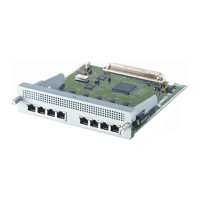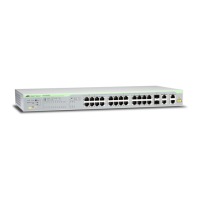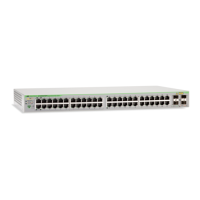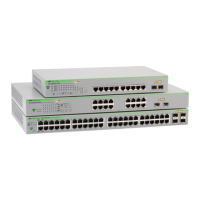DHCP Relay Agent Introduction
7-5
Software Reference for SwitchBlade x3100 Series Switches (Network Management)
• The gateway IP address is not 0.0.0.0.
2. The relay agent adds the DHCP relay agent information option 82 consisting of the following:
• agent circuit id sub-option 1 - Identifies the exact interface the request was received on. (Also, when a
reply to the request is received by the agent, the agent circuit id option is used to determine the inter-
face to send the reply to.) The agent circuit id is generated automatically and is set based upon the
slot/port VLAN ID from where the request was received.
• agent remote id sub-option 2 - Identifies the client further (subnet address space from which the IP
address should be allocated). The MAC address of the system is used, but can be manually configured.
3. The DHCP Relay Agent inserts its own IP interface address in the IP source address field of the packet
(i.e. the source IP address of 0.0.0.0 is replaced by the DHCP Relay Agent IP address. This allows the server
to respond via unicast to the relay agent.
4. The DHCP Relay Agent also replaces the “all networks broadcast address” in the IP destination address
field of the packet with the IP address of the DHCP server. If the relay agent is aware of more than one
server, it does this for each of the server addresses so that the same request is sent to each of these serv-
ers.
5. The DHCP Relay agent sends the DHCP packet over the inband management VLAN as a unicast mes-
sage.
7.2.2.2 DHCP Server Sending IP Address
When the snooping agent receives a DHCP packet from the server over the inband management VLAN, the fol-
lowing occurs:
1. The DHCP Snooping agent checks the packet for option 82. If option 82 is not present, it is discarded.
2. The DHCP snooping agent checks the agent’s remote id, which identifies a specific network access product
system.
• If it is not this system, the packet is flooded over all interfaces configured as NETWORK for the inband
management VLAN.
• If it is this system, the option 82 information (circuit id) is used to determine the interface to send the
reply to. The option 82 is removed from the packet and the packet is sent to the destination (CUS-
TOMER) interface.
7.2.2.3 Static IP Allocation
The client may also request a static IP address; if the DHCP server can allocate the address, the client will have
the address without a time limit.
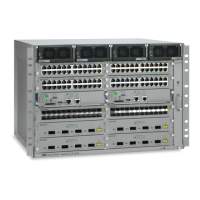
